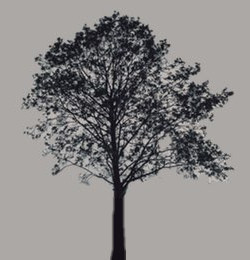
The style and structure of MKP in part comes about because of the kind of exploration or navigation the Web implicitly encourages:
search > find > take^not take > leave > search > find > take^not take > leave . . .
This practice (or behavior? habit? obsession?) is one subtle but powerful algorithmic by-product of googlization: you get in, you get out, and often context (where you found it, who created it, what else is there, its possible part in an argument or larger idea, its credibility) is left behind; and the faster you can do this, the more temptation there is to click on. Or, alas, click away.
This is one result of the need-for-speed, manifest mainly in the demand for and supply of ever-increasing bandwidth, faster processors, and more efficient loading, downloading, and rendering tools. And every moment, more and more findable material appears on online. If you doubt the power of clickable moving-on, think of what the seemingly harmless remote control instantly did to television-viewing behavior in the 1980s: three terms quickly appeared—channel-hopping, channel-surfing, zapping—and the remote immediately caused the most powerful people in the universe—advertisers—to radically rethink the television commercial and programming strategies.* The same principle (supercharged, digitized!) applies to the irresistible habit of hopping around online—it’s just way too easy. There are, alas, models of pathological internet use that brush up against addiction.
Well, if you can’t beat ’em, join ’em. Or at least attempt to profitably work with this restless practice of acquiring information (one is tempted to coin a term, like “info-swooping”—or, on the darker side, “info-swiping”). Thus MKP attempts to anticipate and accommodate raiding at least as much as reading. As such, there is purposeful overlapping of and repetition between the 159 time-line micro-chapters within MKP (I’ve termed this progressive reduplication), given that a user’s stay may be brief or long, random or specific, accidental or targeted. An attempt is made to not just say the same thing differently, but to massage and structure the critical elements and more factual narrative so that the difference is (I hope) meaningful and probing. Further, the overlapping, repetition, and massaging of information and critical observations reflect the understanding that the user-reader may range from an absolute Keats novice or high school junior to a graduate student or seasoned scholar. Users in the first categories may need to know, for example, who exactly Leigh Hunt is on the very first micro-chapter into which they jump.
Along the way there are, I hope, original insights about Keats and his poetry, as well as some new or seldom seen material that may encourage further searching within the site. And if you want an at-a-glance start on who’s-who in Keats’s world, you can check out a visualization of his social network or simply jump to conclusions.
—GKB
* The remote was initially viewed as subversive. There’s even a book about it by Robert Bellamy and James Walker: Television and the Remote Control (1996). The Web, which operates “on top” of Internet as accessed via your computer, tablet, and smart phone (and watch), is more seductive than your television’s connection to cable, though the two (the computer and TV) have become increasingly co-connected and thus similar in what they do, how they do it, and what they provide. Their mission: to keep you watching.
× Cite this page:
Blank, G. Kim. “Raiding & Reading.” Mapping Keats’s Progress: A Critical Chronology. Edition 3.27 , University of Victoria, 19 August 2024. https://johnkeats.uvic.ca/raidingReading.html.
G. Kim Blank, “Raiding & Reading,” Mapping Keats’s Progress: A Critical Chronology, Edition 3.27 , last modified 19th August 2024. https://johnkeats.uvic.ca/raidingReading.html.
Blank, G. Kim. “Raiding & Reading.” Mapping Keats’s Progress: A Critical Chronology, Edition 3.27 , last modified 19th August 2024. https://johnkeats.uvic.ca/raidingReading.html.